With all the talk about profits that can be made from the shop side of the business, it could be easy for the forecourt retailer to lose sight of the one thing that sets his operation apart from all the convenience stores in his vicinity. And that of course is the fuel, and the reason why most of his customers set foot on his site in the first place. And that fuel is no good to anyone without the pumps that dispense it. But just how much attention do you pay to your pumps? Are you certain that they are all working properly and that they are not coughing and spluttering and splattering your customers in fuel? And, more importantly, not over-dispensing and giving away your precious profits?
Martin McTague, managing director at Edensure, says over-dispensing is an extremely common problem: "From what we see, over-dispensing at sites with mis-calibrated pumps costs retailers an average of around £4,000 a year. That’s on a typical site selling around 4mlpa and probably only doing an annual meter-proving test.
"Pump giveaways are the second biggest reason for wet-stock losses - delivery day losses are the first. But it’s something that dealers can easily do something about."
McTague says the problem is that over the course of a year the meter will drift from strike. "This can be very unpredictable. We had one site where they cut the meters back to strike in February and several had already drifted again by June. There wasn’t any obvious pattern to it - it wasn’t necessarily the most heavily used pumps that were affected."
McTague of course has a solution - Edensure’s ES3 system, which gives a complete breakdown of which pumps are over-dispensing on a regular basis, helping customers pinpoint exactly where the leaks are.
He continues: "People tend to pick up major problems with pumps when they detect a significant loss. The problem is that a site may have under-dispensing nozzles as well as over-dispensing ones and they can mask problems by balancing each other out so that the tank levels look okay. The under-dispensing nozzles will usually still be within legal limits, but the knack is to pick up on that over-dispensing one, which is giving away fuel, and thereby save yourself money.
"We can set flags on our system and once a nozzle starts to give away a certain amount of fuel it will detect it and alert the dealer once it’s worth tackling. A typical cutback will cost around £100, so if you’re giving away £250-worth of fuel a month, you’ll still be making a good saving."
Meanwhile, Dresser Wayne Pignone has launched a new Xflo meter that is said to maintain accuracy throughout its life. It’s also faster than traditional piston meters. In both lab and field tests DWP says the Xflo "demonstrated no discernible drift after metering millions of litres of fuel".
== Take II ==
Over-dispensing is a worry but there’s no doubt about the biggest concern in the petrol retailing industry at the moment - and that of course is Stage II Vapour Recovery.
According to Anton Martiniussen, managing director at Elaflex, Stage II Vapour Recovery was first introduced in California way back in 1972. It came to Europe in the late 1980s, first in Sweden and then in Switzerland. He says the UK is a later adopter but this is no bad thing as it means dealers here will have the benefit of introducing equipment that’s been tested and is proven to last.
Stage II Vapour Recovery came into force in the UK last October and means those sites dispensing more than 3.5mlpa need to have the vapour recovering equipment installed by the end of 2009.
Torex Retail’s development manager, Bob Higgs, clarifies: "Stage Two has to be completed by January 1, 2010. I prefer to say it should be done by December 31, 2009, otherwise people believe they’ve got the whole of 2010 to do it and they haven’t. People do need to be aware that this deadline is not extendable. If you meet the criteria to have Stage II, you have to do it and you’d be strongly advised to get in quick, because if everybody leaves it to the end some sites will be shut down. DEFRA has made this quite clear."
He continues: "The deadline isn’t really that far away. There are close to 4,000 stations that will need to be converted and a very limited number of companies who can do the work. It depends on how much work each site will need. Some will find that their equipment is too old to be upgraded.
"I would reckon if you’re dealing with pumps going back beyond around 1995 you could have problems. All petrol pumps are approved by National Weights & Measures (NW&M) for a 10-year period. NW&M was making it quite clear at IFFE that if the equipment was out of certification they wouldn’t approve it when they tested it."
Higgs reckons retrofitting is quite straightforward, taking between half a day to a day, to do one pump. "It doesn’t require any digging on the forecourt. There’s pipework to do inside the pump and new nozzles to go on. We don’t need a pipe back to the tank. To retrofit one pump island, offering four grades, will cost around £5,500. That includes the automatic monitoring system."
Torex is currently trialling a retrofit on a Tesco site in Essex. "We’ve also got the built-in version with our Petrotec pump going in at another Tesco in Shrewsbury, which is a brand new site," says Higgs.
Gilbarco Veeder-Root (GVR) has adopted the slogan ’GVR means Guaranteed Vapour Recovery’ for marketing its Stage II service to fuel retailers. The company has created a cross-company project team to provide expert advice and an end-to-end solution to fuel retailers.
GVR marketing director, Marc Braun, explains: "Contracting one supplier to handle the whole project is the most cost-effective and efficient way to ensure a smooth delivery with minimum disruption to your business. On the face of it, piecemeal upgrades may seem attractive but there may be hidden costs that don’t surface until further down the line. We can provide a structured programme fully-costed to enable budget planning."
== Temperature control ==
While Stage II is top of mind, an emerging industry issue is Automatic Temperature Compensation (ATC). Torex Retail’s Bob Higgs explains: "At the moment tankers are filled at 15°C - the whole terminal works on that temperature as standard. But when the tankers arrive at a petrol station they are unloaded at whatever the temperature is then. So if it’s a very hot load it will shrink and the retailer loses out. For the oil companies to load and deliver at 15°C will require them to put metres on their tankers, which will be a huge expense. Belgium and Austria have already gone this way and the PRA is pushing the government for Automatic Temperature Compensation here.
"But there’s actually no reason why sites can’t adapt their own pumps to deliver to the customer at 15°C. However the problem with that is that as long as the temperature remains below 15°C, the dealer makes money. If it goes above 15°C then the customer gains. It’s swings and roundabouts and dealers need to be aware of that."
Higgs says the kits to adapt pumps are already available for his Petrotec pump range, because they are being used in Canada, Australia and Belgium. "The equipment has temperature sensors to read what the temperature of the fuel is as it is dispensed. It uses very quick reacting chemical sensors to pick up the temperature, compensate the electronics and deliver accordingly. Currently the equipment is quite expensive - it would cost about £1,000 per nozzle - however, we’re currently testing a solution that will cover all three grades at once - where one set of electronics can cover three channels, using three probes. This would bring the costs down and should be ready this summer."
== Age-old problem ==
Yet another industry problem is the number of older pumps still in circulation. Higgs says it’s getting more and more difficult to get hold of parts for pumps that are over 10 years old.
"What happens is that the old pumps keep needing to be refurbished and repaired, but things like electronic boards can only be repaired so many times. The recommendation is that you don’t repair any more than three times, but some people are doing it a lot more than that just to keep their pumps going."
He says forecourt operators are holding onto equipment for longer than they should: "When the hypermarkets started off they used to keep pumps for three years, then it went to five years and now it’s seven. I know some dealers that have got pumps that are 15 -20 years old and these are the ones that are heading for trouble, particularly with the Stage II legislation coming in. If they’ve got a high-volume site they will have a lot of work to do."
Then when it comes to replacing your pumps, there’s the issue of opting for new or refurbished equipment.
Higgs says the big problem with refurbished pumps is that most of them will have licences and certificates that have run out. "Unless the manufacturer is prepared to get them re-tested under current standards then you can’t refit them. We’ve seen cases where a dealer has bought some second-hand pumps and put them on his site, only for the National Weights & Measures officer to say ’sorry these pumps are out of certification - I can’t approve them’. Then you’re stuck with pumps you can’t use."
Then there’s the price - Lee Slater, sales manager at Tokheim UK says: "The difference in cost between new and refurbished pumps is probably smaller than most retailers imagine. And even a comprehensively refurbished dispenser still entails a ’donor dispenser’ which may well be 25 years old or more."
There’s no doubt that the issues surrounding pumps are huge and are likely to only get more complicated.
Charndeep Khattar, marketing manager at Gilbarco comments: "Customers are looking to increase the number of grades; there’s a move from two and three to three and four, especially as the major oil companies promote their premium grades."
There’s also the use of alternative fuels and the effect these might have on the equipment. However one thing’s for sure, if you don’t look after your pumps, you’re dribbling your profits down the drain.
----
=== Hints and tips ===
? Noisy pumps - a noisy pump could be due to a loose motor belt. This affects the speed at which the pump dispenses and can result in customers getting covered in fuel because the nozzle is not cutting off properly.
? Spout problems - spouts can burr up and the breather hole can get blocked with dirt. This can result in the pump not dispensing properly. However this is a problem retailers can rectify themselves by checking the spouts regularly and cleaning with a small file or screwdriver.
? Pump head displays - retailers should ensure that pump head displays are lit up at night so drivers know the site is open.
? Slow running pumps - these can mean queues at the forecourt and would-be customers by-passing the site for one that’s less busy. A common reason for slow fuelling is low fuel levels in the tank. The debris from the bottom of the tank can block up the filters and have a detrimental effect on pump nozzle operation and even fuel metering. Operators need to make sure fuel stock doesn’t run too low - a fuel stock management system can help avoid this situation.
? Cleanliness - operators should wipe down pump heads rather than spray them so water doesn’t penetrate into the electronic components. Nozzle holsters should be cleaned and lubricated regularly with WD40 to avoid problems with nozzle flaps sticking.
Source: EPOS Engineers, part of Indigo Retail Holdings
----
=== The future ===
At Automechanika 2006 Dresser Wayne Pignone unveiled a new type of fuel dispenser called Global Ovation iX, based on an ATM-style user interface.
Global Ovation includes iX Media Enterprise, software that supports audio and video functions. This enables the pump to offer users real-time internet news headlines, traffic information and weather reports on its screen, together with tailored video promotions all while they fill up.
The iX technology also supports two other product extensions: iSense, a self-diagnostics/remote management system that automatically diagnoses and troubleshoots potential site equipment problems before they occur, streamlining maintenance and reducing unexpected downtime. It also allows real time monitoring of tank levels and flow rates from anywhere in the world.
Meawhile iDPOS is an in-dispenser pos feature which guarantees uninterrupted fuel and merchandise sales all day, every day by independently managing transactions and credit card sales right at the dispenser. This means that even if your in-store POS system is off-line, your site will be able to keep selling fuel.


















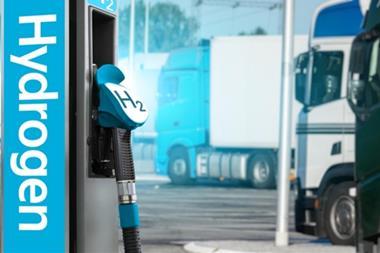
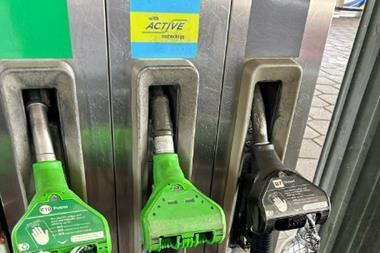
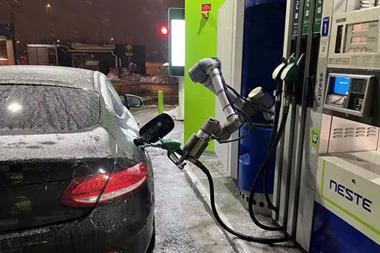

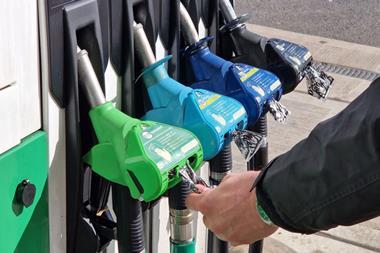
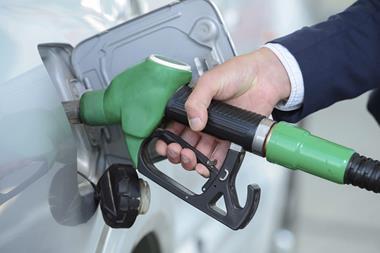

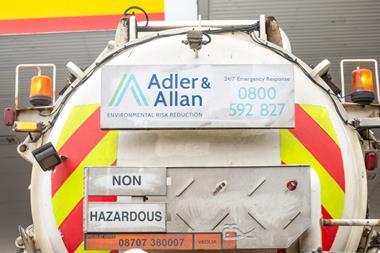
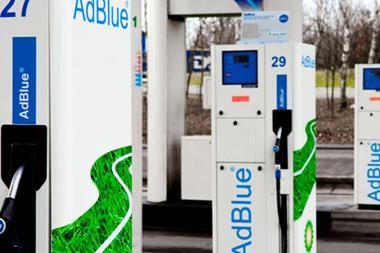
No comments yet